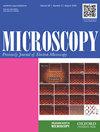植物细胞超分辨率的结构光照方法
IF 1.8
4区 工程技术
引用次数: 14
摘要
综述了结构照明方法在超分辨率光学显微镜中的应用。讨论了使用宽场和基于点的技术的挑战和最近的进展,并具体应用于活细胞成像。生物显微镜超分辨率技术的出现为探索蛋白质和小分子在细胞中的分子分布开辟了新的领域。光学设计的改进和荧光发射收集方法的创新已经在来自化学标记和荧光蛋白的信号方面产生了实质性的增益。构造照明以从特定甚至随机图案引发荧光允许从用常规探针标记的样品中提取更高阶的空间频率。这种方法在超分辨率成像的植物系统中的应用相对较慢,这在很大程度上是由于通过植物细胞壁成像时产生的像差。在这篇简短的综述中,我们讨论了在活体植物标本中生成超分辨率图像的两种突出方法的使用,并讨论了更好地使用这些技术的未来方向。本文章由计算机程序翻译,如有差异,请以英文原文为准。



Structured Illumination Approaches for Super-Resolution in Plant Cells
The application of structured illumination approaches for super-resolution light microscopy in plant cells is reviewed. Challenges and recent inroads using both wide-field and point-based techniques are discussed with specific application to live-cell imaging. The advent of super-resolution techniques in biological microscopy has opened new frontiers for exploring the molecular distribution of proteins and small molecules in cells. Improvements in optical design and innovations in the approaches for the collection of fluorescence emission have produced substantial gains in signal from chemical labels and fluorescent proteins. Structuring the illumination to elicit fluorescence from specific or even random patterns allows the extraction of higher order spatial frequencies from specimens labeled with conventional probes. Application of this approach to plant systems for super-resolution imaging has been relatively slow owing in large part to aberrations incurred when imaging through the plant cell wall. In this brief review, we address the use of two prominent methods for generating super-resolution images in living plant specimens and discuss future directions for gaining better access to these techniques.
求助全文
通过发布文献求助,成功后即可免费获取论文全文。
去求助
来源期刊

Microscopy
工程技术-显微镜技术
自引率
11.10%
发文量
0
审稿时长
>12 weeks
期刊介绍:
Microscopy, previously Journal of Electron Microscopy, promotes research combined with any type of microscopy techniques, applied in life and material sciences. Microscopy is the official journal of the Japanese Society of Microscopy.
 求助内容:
求助内容: 应助结果提醒方式:
应助结果提醒方式:


